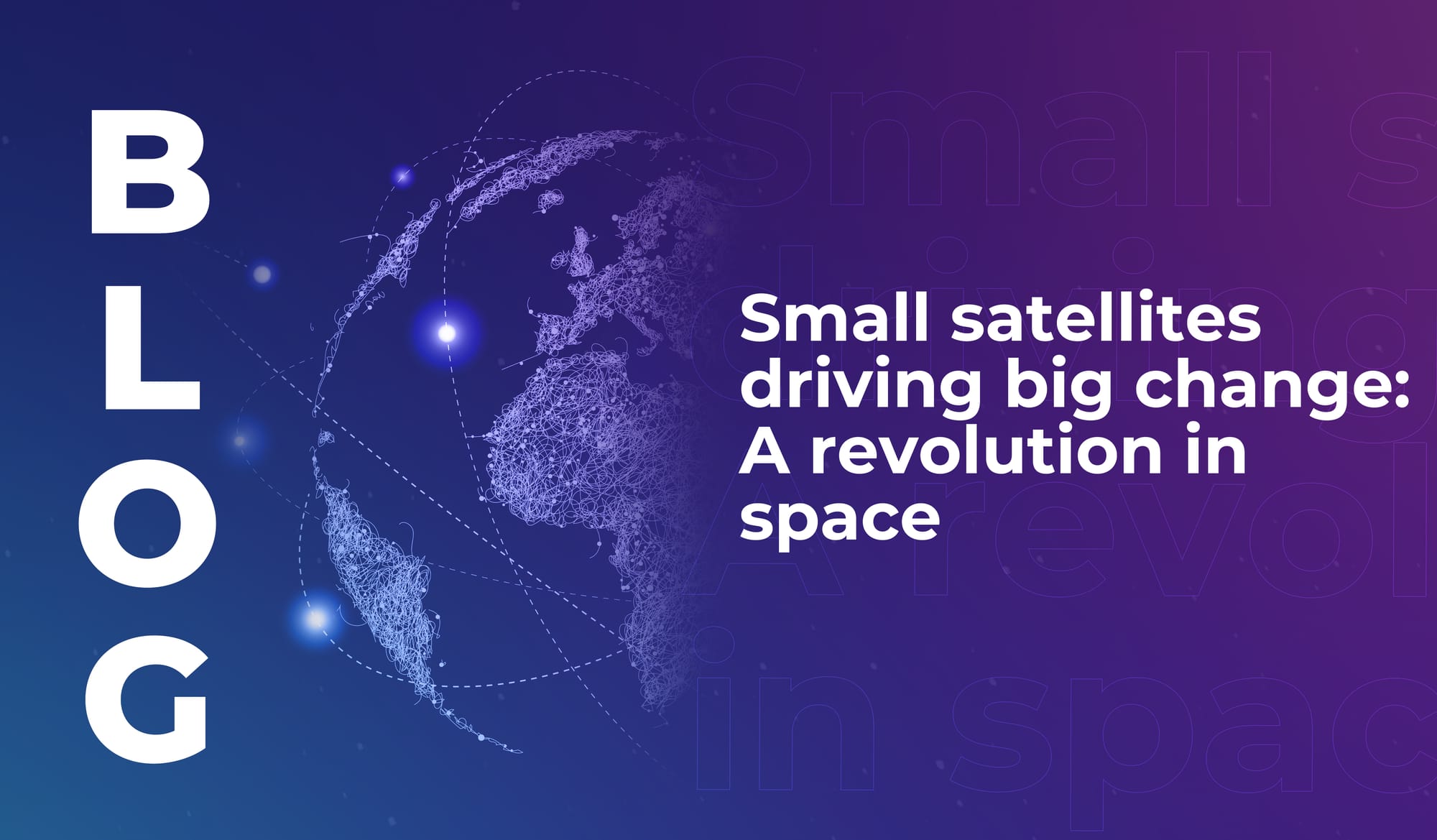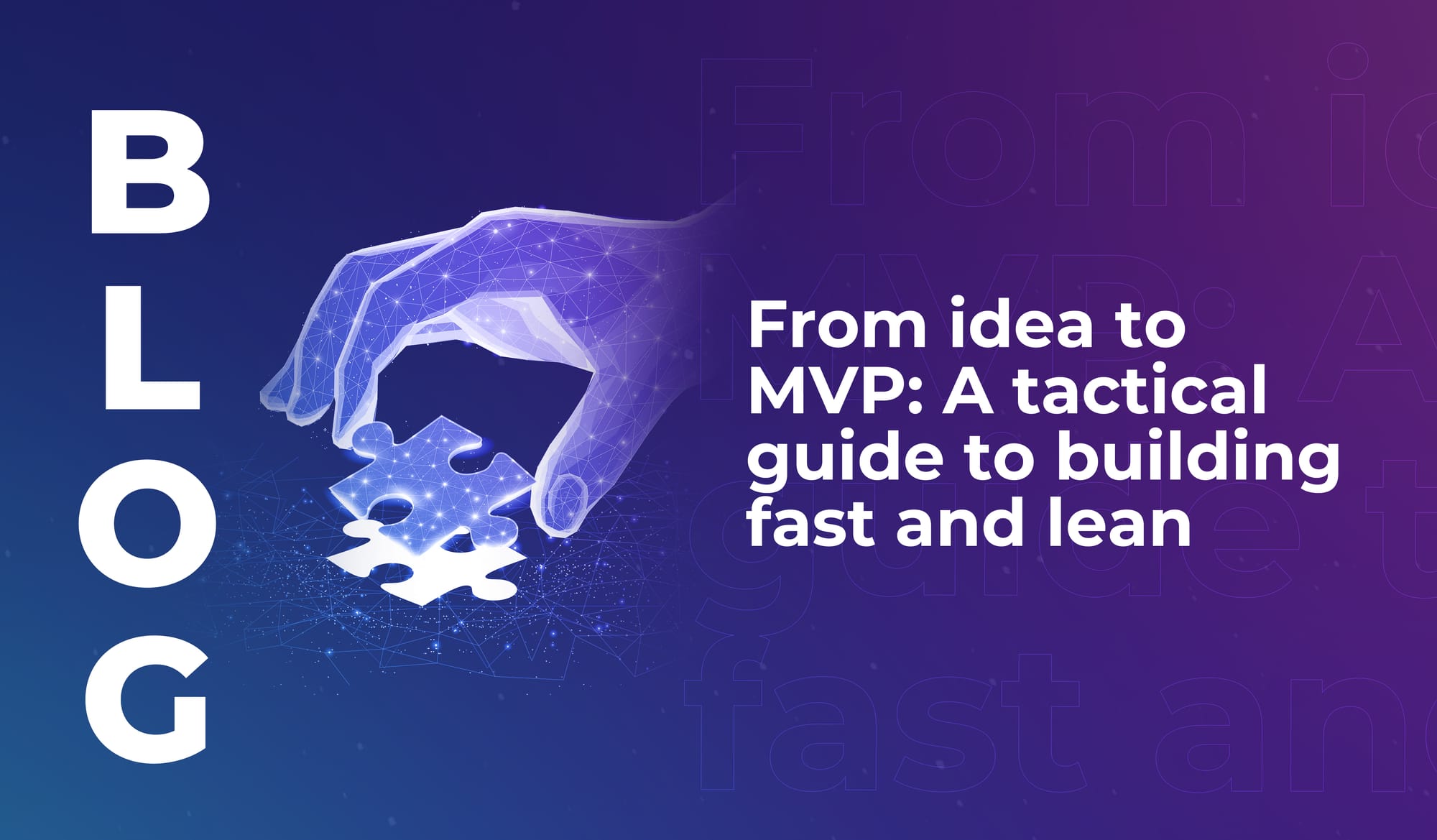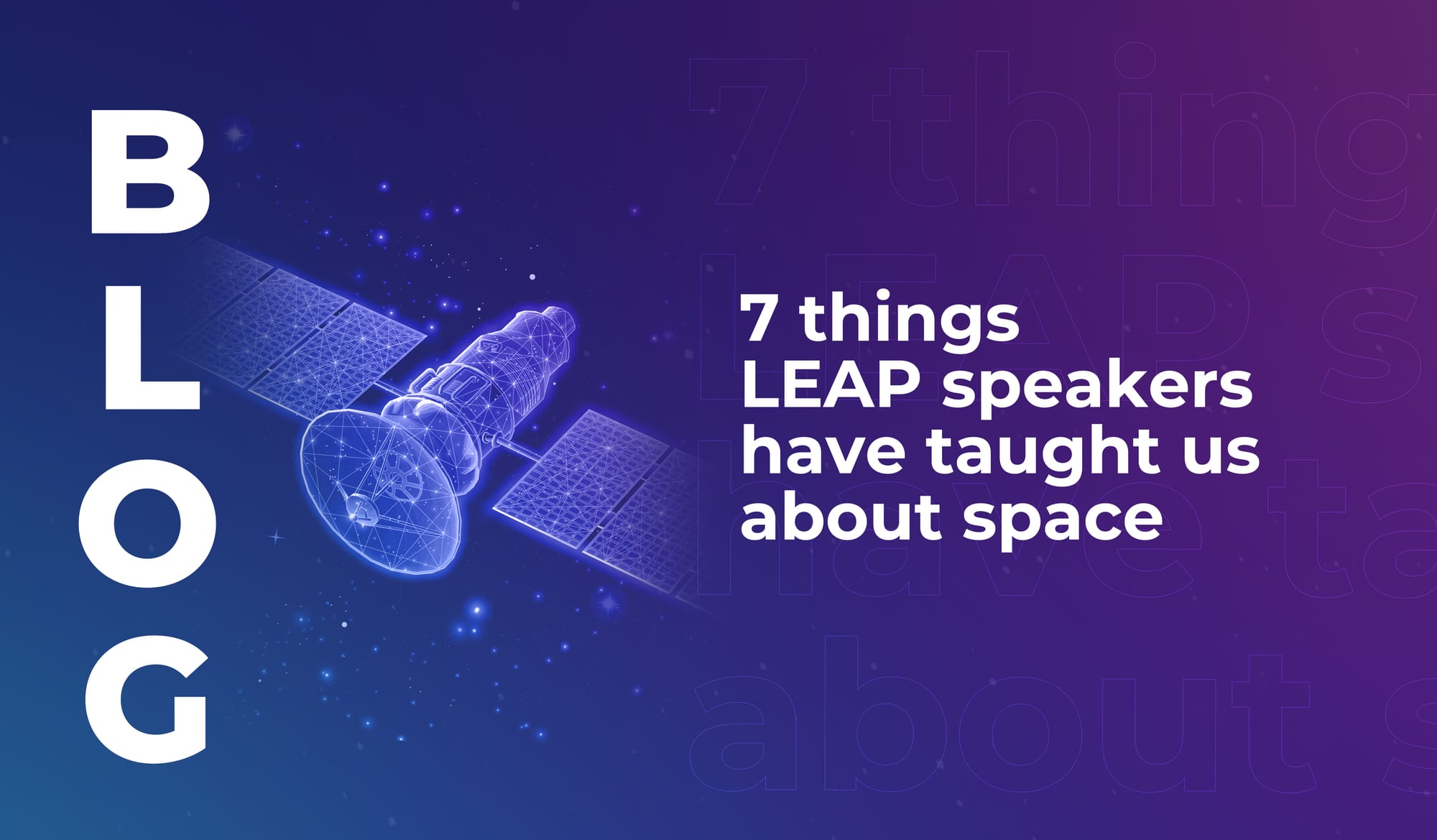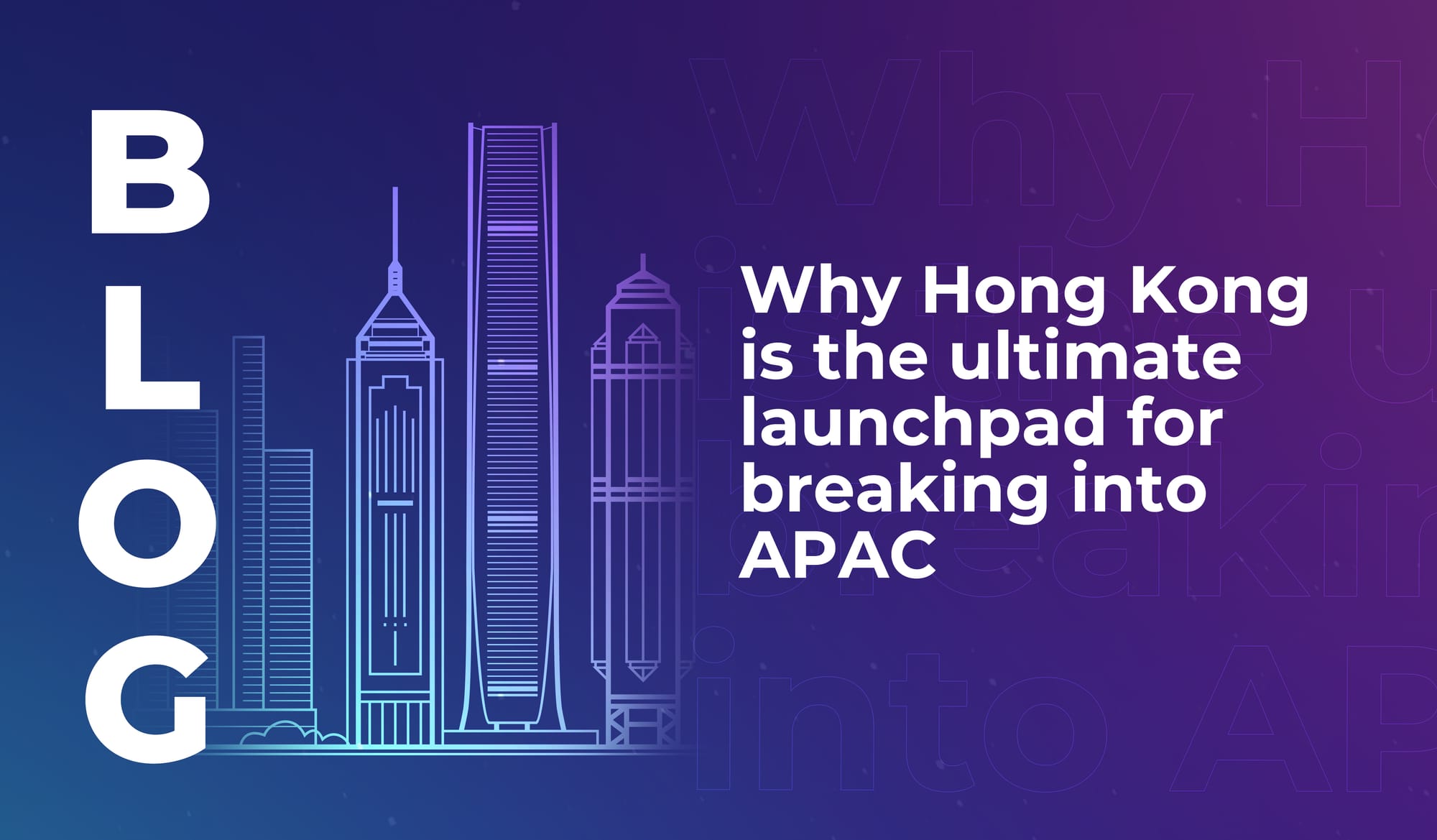
Small satellites driving big change: A revolution in space
How miniaturisation is transforming space tech – from student-built satellites to global innovation networks orbiting above us.


You’ve got an idea. Maybe it's scribbled on a whiteboard, jotted in your Notes app, or keeping you up at night (we know the feeling). You believe in it; but the big question is how do you take that idea and turn it into something real?
And how do you do that without devoting every minute of your time to it for the next year or two and burning through your savings?
That’s where the minimum viable product (MVP) comes in. It’s your idea in its most essential, testable form. And when you get it right, it’s the difference between ‘just another startup idea’ and the foundation of a business.
Here’s your tactical guide to building an MVP fast, lean, and with real traction in mind.
Before you write a single line of code, ask: Does anyone actually want this?
When our colleagues at Black Hat MEA asked Moataz Salah (CEO at CyberTalents) about the key challenges for entrepreneurs in the cybersecurity sector, he said:
“I believe that idea validation is crucial for the success of any startup.”
And when you don’t validate, you’re setting yourself up to fail. Salah pointed out it can lead to building products that solve a problem nobody actually has; or products that just aren’t a good fit for the market. So entrepreneurs in all tech sectors need to dedicate more time to validating their ideas before they start building.
“This can be done by talking to potential customers, conducting market research, and getting feedback from industry experts. It's also important to consider the business side of things, such as the target market, pricing, and competition.”
And validation doesn’t stop before your first prototype. “In my own experience, I've found that idea validation is an ongoing process,” Salah added. “Even after you've launched your product, you need to continue to get feedback from customers and make adjustments as needed. This is the best way to ensure that your product is meeting the needs of the market and that your business is successful.”
What’s the single most important thing that needs to be true for your idea to work? That’s your core hypothesis. Your MVP should test it directly.
Say you're building a marketplace for freelance designers. Your core hypothesis might be: ‘Busy marketing managers are actively looking for vetted, on-demand design talent.’
Now, ask yourself: What’s the simplest way to test that? It might be a Google Form with a Stripe link. Or a Notion doc and a scheduling link. The point is, you don’t need a full platform – you need a result.
An MVP isn’t just a rough product. It’s a highly focused one. It includes only the features that test your hypothesis, because at this point, everything else is noise.
Focus on:
Take inspiration from Oscar Barranco Liébana (Integrated Operations Platform Director, FIFA World Cup Qatar 2022), who managed innovation on a global scale. He emphasised the importance of incremental momentum:
“It’s not about a single big leap – it’s about many small steps that build momentum.”
And that’s exactly how you should think about your MVP.
Once your MVP is live, your goal is feedback (not fame – sorry).
Get it into the hands of users and watch what they do. Where do they drop off? What confuses them? What feature are they begging for – and are there features they’re ignoring entirely?
This is where being lean really matters. Iterate quickly, test new ideas, and throw away what doesn’t work. If it hurts to pivot, your MVP is too bloated.
Wiktor Schmidt said:
“Scaling becomes considerably more manageable when you're surrounded by incredibly talented individuals.”
He was talking about your team; but this message should absolutely include your early adopters. Treat them like co-creators. Their insights will shape your product far more than your roadmap.
Even if you’re bootstrapping, you’re not doing this alone. Your MVP stage is the perfect time to start involving advisors, mentors, and even potential investors.
Oscar Barranco Liébana had this to say about meaningful collaboration:
“Surrounding yourself with trusted, committed, and talented individuals fosters better communication, collaboration, and intelligence, which actually makes things flow easier and more effectively.”
We know you’re probably not scaling a global event like he did, but that principle holds true for every startup.
Make sure your stakeholders (users, partners, early team members) understand what’s in it for them. If you create shared wins early, they’ll feel invested and be keen to back you as you grow.
You don’t have to raise funds at an early stage – and in spite of the flashy seed fund headlines, many startups bootstrap for years before they even think about approaching investors.
But if you are ready to raise funds, choose your investors like you’d choose a co-founder. You need someone who can bring more than money to the table; someone who’s willing and able to share their experience, their network, and a commitment to your mission.
When we interviewed LEAP speaker William Bao Bean (General Partner at SOSV), he said:
“Never work with an investor who doesn’t understand your business.”
An aligned investor doesn’t just write a cheque. They become part of your team. Bao Bean’s VC firm works with companies throughout their lifetime – and if you can connect with an investor who’ll do that, you’ll set yourself up for sustained success.
Your MVP isn’t your final product. It’s your starting point. The goal isn’t to impress anyone, it's to learn – so these early iterations do not need to be perfect.
Stay lean. Keep asking questions, and listen to the answers – even if you don’t like them. Build what matters, and let everything else go.
Startup success isn’t about flashy deals and heroics. It’s about habits, people, and purpose. Get those right, and your MVP will be just the beginning.

How miniaturisation is transforming space tech – from student-built satellites to global innovation networks orbiting above us.

Seven lessons from LEAP’s space speakers on perspective, creativity, and connection – showing how space thinking transforms life on Earth.

Hong Kong offers unmatched access to APAC, combining connectivity, capital, innovation, and stability, making it the ideal launchpad for LEAP East.

How miniaturisation is transforming space tech – from student-built satellites to global innovation networks orbiting above us.

Seven lessons from LEAP’s space speakers on perspective, creativity, and connection – showing how space thinking transforms life on Earth.

Hong Kong offers unmatched access to APAC, combining connectivity, capital, innovation, and stability, making it the ideal launchpad for LEAP East.